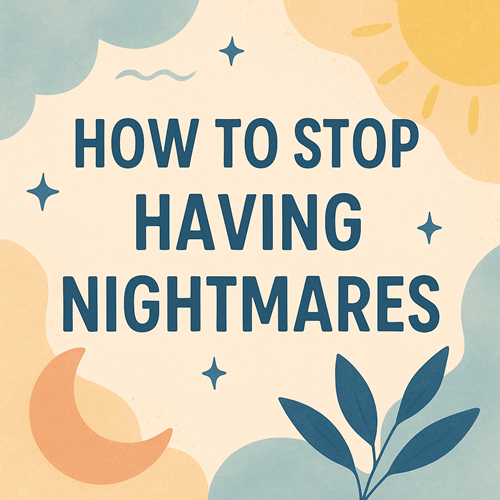Unlock the Magic of Lucid Dreaming
Lucid dreaming opens an incredible path to conscious exploration of the sleeping mind. Around 55% of people experience at least one lucid dream in their lifetime, and about 23% have them monthly (Saunders et al., 2016). By applying proven techniques like Mnemonic Induction (MILD), Senses Initiated Lucid Dreaming (SSILD), Wake‑Back‑to‑Bed (WBTB), and Wake‑Induced Lucid Dreaming (WILD), anyone can increase their chances of becoming aware within a dream. With simple daily habits—reality checks, intention setting, and noting subtle body sensations—you can unlock your dreams’ full potential for creativity, problem‑solving, and emotional well‑being (Healthline; Sleep Foundation, 2024).
The Science Behind Lucid Dreams
A lucid dream occurs when you realize you’re dreaming while the dream is still in progress, blending waking self‑awareness with vivid REM imagery (Wikipedia; Saunders et al., 2016). Neuroimaging studies suggest that lucid dreaming engages the prefrontal cortex and parietal lobes—regions responsible for self‑reflection and executive function—allowing you to observe and sometimes steer the dream narrative (Mutz & Javadi, 2017).
Micro-Signal Amplification
Dreams often send fleeting “micro-signals”: brief body sensations, shifts in balance, or emotional undercurrents. By noticing and amplifying these signals—such as mentally turning up a flutter in the chest—you strengthen your ability to recognize dream signs and trigger lucidity (Schredl & Erlacher, 2004; Hristova & Georgiev, 2022).
Prevalence and Key Benefits
| Measure | Statistic |
|---|---|
| Lifetime experience | 55% have had ≥ 1 lucid dream (Saunders et al., 2016) |
| Monthly occurrence | 23% report lucid dreaming ≥ 1×/month (Saunders et al., 2016) |
| Meditation effect | Meditators: ~4.3 lucid dreams/month vs. Non-meditators: ~2.6 (Mutz & Javadi, 2017) |
- Nightmare reduction: Imagery rehearsal in lucid dreaming can cut nightmare frequency by up to 70%, offering relief for PTSD and anxiety sufferers (Pozza et al., 2021).
- Creativity boost: Lucid dreamers often report greater creative insight on waking tasks, indicating powerful dream-to-wake transfer of ideas (Erlacher & Schredl, 2012; Stumbrys et al., 2016).
Core Induction Techniques
Mnemonic Induction (MILD)
Before sleep, repeat the intention “Tonight I will realize I’m dreaming” and review a recent dream. Adding sensory focus—observing small bodily cues as you drift off—can raise success rates to 46–55% (LaBerge et al., 2018).
Senses Initiated Lucid Dreaming (SSILD)
Alternate attention between vision, hearing, and body sensations in short cycles before sleep. This concentrated awareness enhances recognition of dream signals, producing lucid dreams in about 40% of practitioners after several nights (Sleep Foundation, 2024).
Wake-Back-to-Bed (WBTB)
Wake after ~5 hours of sleep, spend 15–30 minutes reflecting on dream fragments or subtle body feelings, then return to sleep with your intention. WBTB boosts REM density and dream recall, yielding lucidity in 50–60% of attempts (Sleep Foundation, 2024).
Wake-Induced Lucid Dreaming (WILD)
Keep your mind awake while your body falls asleep. Focus on hypnagogic imagery and subtle sensations to transition directly into a lucid dream. Though challenging, WILD can offer up to 30% success when practiced consistently.
Reality Checks & Daily Practices
- Reality checks: Perform checks (e.g., pinch your nose and try to breathe through it) several times daily. These habits often carry over into your dreams, triggering lucidity.
- Dream journaling: Write down your dreams each morning, noting oddities and body sensations. This boosts recall and primes your mind for lucidity (Schredl, 2004).
- Mindfulness meditation: A daily mindfulness practice sharpens meta-awareness, which transfers into sleep and increases lucid dream frequency (Mutz & Javadi, 2017).
Getting Started: Practical Tips
- Focus on one technique. Master MILD before layering SSILD or WBTB.
- Be consistent. Most people notice results within 1–2 weeks of regular practice.
- Stay excited! Approach each night as an opportunity for discovery.
- Join a community. Online forums and local groups offer support, advice, and inspiration.
Conclusion
Lucid dreaming is an accessible adventure for everyone. With simple practices and a curious spirit, you can explore your inner dreamscape, boost creativity, reduce nightmares, and uncover new dimensions of self-exploration. Sweet dreams—and happy lucid adventuring!



